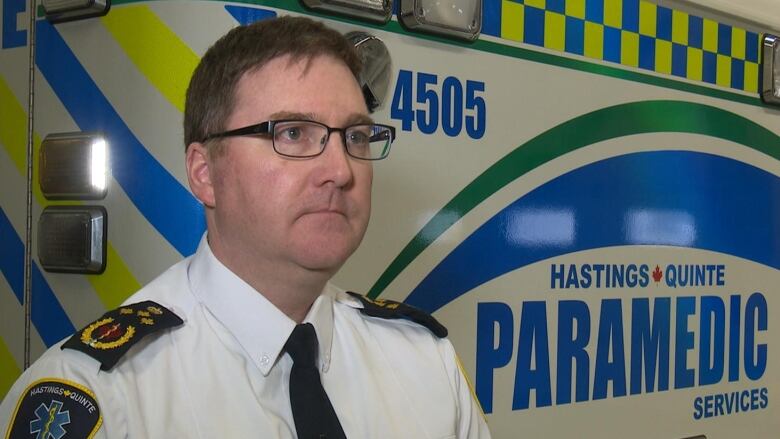Ontario paramedics hope to get provincial approval for project to avoid double dispatching
Pilot project, which would last 3 months, would aim to prevent duplication of ambulance services

Paramedics in three Ontario counties are hoping to obtain Ontario government approval for a pilot project that would improve ambulance dispatching in the large area that they cover.
Doug Socha, paramedic chief of Hastings-Quinte Paramedic Services, said the project would involve a website with a digital mapthat would track ambulances on the road through an "auto vehicle locator."
The pilot project inHastings, Northumberland andPeterboroughcounties, east of Toronto,would aimto avoid duplication of services.

"We have had multiple meetings to try to advance this technology. We feel it's very beneficial, not only to our community, but to the rest of Ontario," Sochasaid.
Paramedics 'really frustrated'
"We're really frustrated and certainly not understanding why we haven't received a response, a positive response, and no concrete timeline on when we could look at implementing this."
Currently, a communications centre in Kingston dispatches Hastings-Quinte paramedics, while onein Lindsay, Ont. dispatchesNorthumberland and Peterborough County paramedics. The provincesruns thecentres, which dispatch regionally, but the municipalities offer the services.
When an emergency call is received from a location within five kilometres ofcounty boundaries, one ambulance will be dispatched from the Kingston centre while another will be dispatched from the Lindsay one. Then the centres will contact paramedics to determine which ambulance is closer and the ambulancefurther away will be cancelled.

And anambulancecannot be diverted to another call until it isdetermined which one is closer. And because one centre cannot track the ambulances dispatched by another, Sochasaid thelack of co-ordination results in double dispatching.
Essentially, the problem means a waste of resources, he said.
Province willing to discuss 'next steps'
David Jensen, spokesperson for Ontario's health ministry, confirmed in an email that ministry officials will meet later this month with Sochato discuss the proposal.
In the email, Jensen said the ministry is preparing to talk about "next steps" for the planned pilot project.
"The ministry of health and long-term care is focused on a number of foundational business transformation projects which will improve land ambulance communications and dispatch in Ontario to create operational efficiencies and put patients first within Ontario's emergency health system," he said.

Socha saidthe pilot project would be funded by the Eastern Ontario RegionalNetwork, a project that aims to improve mobile service acrossthe region with the help of the provincial and federal governments, but itneeds approval from the ministry because the technology involvedwould have to be located at the provincially-run dispatch centres.
"It would be at no cost to the ministry of health," he said.
With files from Muriel Draaisma, Frederic Pepin












_(720p).jpg)


 OFFICIAL HD MUSIC VIDEO.jpg)
.jpg)



























































































